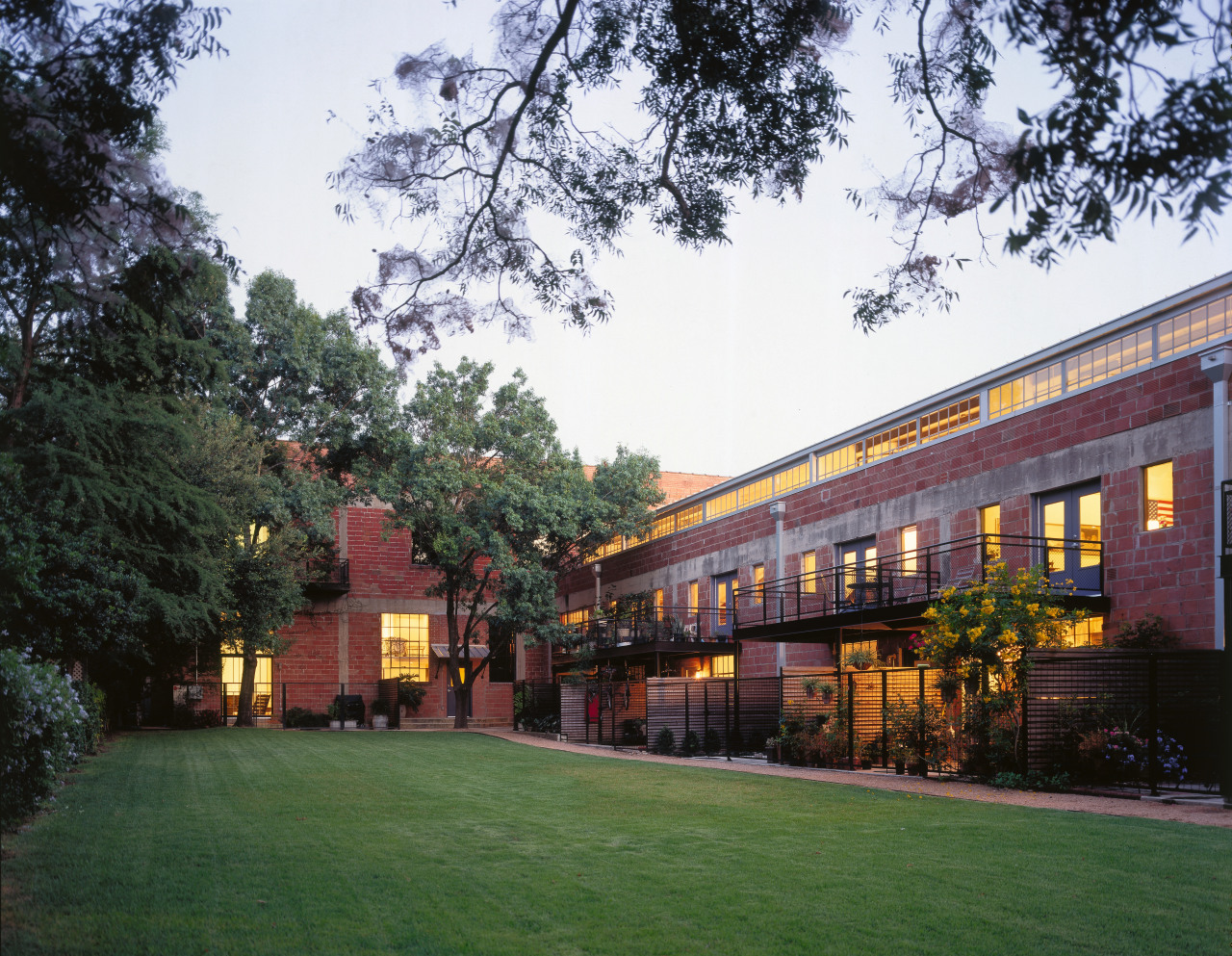From a transparent past
Two turn-of-the-century glass factories have been reconfigured as spacious lofts. Respect for the buildings' origins on the outside is carried through to the apartment interiors
Revitalisation of urban neighbourhoods continues to bring homeowners back to the inner city, and offers abandoned buildings new life as residential developments. In many downtown areas, this means renovating the shell and services of an existing industrial building, and dividing the space into loft-style apartments.
This approach was taken when developer Steve Yndo renovated two glass-working factories from the early 1900s. He asked architect Jim Poteet of Poteet Architects to keep the exterior remodelling sensitive to both the buildings' origins and the general neighbourhood. The buildings sit in a National Register Historic District, populated with large, dignified Victorian homes.
"These buildings wear the turn-of-the-century industrial livery of red clay brick," says Poteet. "Work on the exterior was kept to a minimum and no attempt was made to jazz-up or gentrify the historic exteriors.
"We kept the new insertions as minimal as possible to let the original industrial use read through. That a factory coexisted with this Victorian neighbourhood at the turn of the century only adds to the area's richness."
Poteet's company, in close collaboration with FAB Architecture's Patrick Ousey, also handled much of the interior renovating for the individual residents, including Yndo's own apartment.
The Yndo family has small children, so it was important that this loft had a comfortable feel, rather than a hard-edged, industrial look. Their extensive collection of contemporary art played a role in the overall design, too.

"We wanted to highlight the original building's material and textures, and contrast those elements with the newer surfaces," says Ousey.
"So, the clay tile walls were simply painted. The concrete floors were stained, and the longleaf pine floors and ceiling structures of the upper level were coated with clear sealer. Elements like the galvanised ducting are an exposed feature."
The open-plan first floor contains the public rooms, and the original, multi-paned industrial windows bring plenty of natural light into the space. The high walls were painted white, to create a neutral background for colourful artwork and reflect the light.
Downstairs, orange, gold and olive green were chosen to accent the black floors and white walls. Upholstered furniture offers the relaxed feel the owners wanted, and the pieces' simple lines work well with the loft's contemporary style and exposed industrial elements.
To augment the decor, the architects used recycled pieces recovered from the former factory. A dismantled elevator shaft yielded a substantial metal beam that found a new life as a hearth support in this living room. Above the fireplace, back-painted glass was used to create a focal point for the room.
"In this kind of space, bold elements such as the fireplace feature work well in terms of scale and simplicity," says Ousey.

A pared-back kitchen occupies the other end of the living area. The architects' minimalist cabinet design is complemented by open-grain ash veneer on the door and drawer fronts. The light golden shade of the wood complements the yellow and gold accent colours used in the living room. The stainless steel appliances and splashback bring a slightly industrial edge to the design.
An ebonised oak breakfast bar serves as an informal eating area, and separates the working side of the kitchen from the lounge area.
The same dark wood is used for the open stairway leading to the second floor. Midway up, a mezzanine was introduced at the request of the owner. The mezzanine is constructed from steel and glass, and strategically placed to afford views out across the communal lawn and to break up the volume of space on the apartment's lower level. The owners use the area as a home office.
While the materials used in the ground floor and mezzanine level celebrate the bold, strong and industrial, the upper floor has a more cossetted feel. Industrial elements are still in evidence, such as the unplastered ribbing of the brickwork and the original steel grid windows, but the bedroom ceilings are enclosed and service elements are tucked out of sight.
Credit list
Architects and interior design (loft)
Floors
Paints
Kitchen designer
Benchtops
Kitchen sink
Ventilation
Basin
Story by: Charles Moxham
Home kitchen bathroom commercial design









